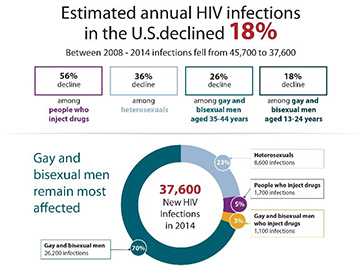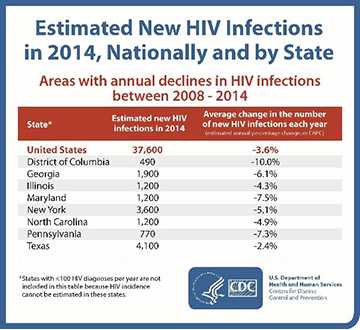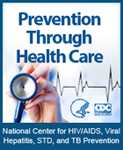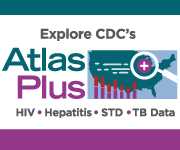2017 Conference on Retroviruses and Opportunistic Infections
February 15, 2017 – New data signals HIV prevention and treatment efforts in the U.S. are paying off
CDC released estimates of the number of annual HIV infections (HIV incidence) in the United States – overall and by transmission group – at the Conference on Retroviruses and Opportunistic Infections on Feb. 14, 2017, in Seattle. After remaining stable since the mid-1990s, the estimated number of annual HIV infections in the U.S. fell 18% between 2008-2014. These estimates provide the most up-to-date picture of HIV trends in the United States. Additionally, research from a joint study by The Rollins School of Public Health at Emory University and CDC suggests that for gay and bisexual men, pre-exposure prophylaxis (PrEP) for HIV prevention, along with testing for and treatment of sexually transmitted infections (STIs), can reduce not only HIV, but also some STIs, even in the presence of some reductions in condom usage.
Resources
- Press Release: New HIV infections drop 18% in six years
- Fact Sheet: HIV Incidence: Estimated Annual Infections in the U.S., 2008-2014 — Overall and by Transmission Route
- Study Summary: Study Suggests STI Testing and Treatment as Part of PrEP Care May Reduce STIs among Gay and Bisexual Men
CROI Graphics: HIV Incidence: Estimated Annual Infections in the U.S., 2008-2014
The following images and graphics highlight major findings from CDC’s analysis. These high-resolution, public domain images are ready to download and print in your publication. Click on a graphic to see it in high-resolution.
These images are in the public domain and are thus free of any copyright restrictions. As a matter of courtesy, we ask that the content provider be credited and notified of any public or private usage of an image.
Estimated New HIV Infections in the US by Transmission Route

View High Resolution Version
After remaining stable since the mid-1990s, the estimated number of annual HIV infections in the U.S. fell nearly 20% between 2008-2014 (from 45,700 to 37,600). However, HIV remains a serious health problem in the U.S., with gay and bisexual men bearing the greatest burden by risk group.
Estimated New HIV Infections in 2014, Nationally and by State

View High Resolution Version
The most recent analysis of the number of new HIV infections estimated to occur each year in the U.S. provides a sign of progress in HIV prevention. In addition to the national decline, CDC researchers did not find any increases in annual HIV infections in the 35 states and Washington, D.C., where annual HIV infections could be estimated — they decreased or remained stable in all of those areas.
- Page last reviewed: February 15, 2017
- Page last updated: February 15, 2017
- Content source:


 ShareCompartir
ShareCompartir

